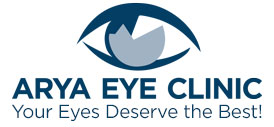Blepharitis is the inflammation of the edge of the eyelids and often affects the part of the eyelid where the eyelashes grow. This condition typically occurs when microscopic oil glands near the base of the eyelashes become clogged, causing irritated and red eyes. Sometimes, blepharitis causes the formation of dandruff-like flakes at the base of eyelashes. Symptoms include watery and red eyes, irritated eyelid margins, redness, burning, and dryness. If left untreated, blepharitis can cause chronically-clogged glands, styes, and loss of eyelashes. Several diseases and conditions can cause blepharitis, and it is a chronic condition which requires long-term management.
Eye Care Library

AMD is an eye disease that affects the central part of the retina, called the macula. This condition affects central vision, making it difficult or impossible to do activities such as reading or driving. AMD is one of the most common causes of poor vision after the age of 60 years, and also the most common condition that leads to vision loss and legal blindness in Canada. However, AMD rarely leads to total vision loss because it does not affect the peripheral vision. There are two types of AMD: dry and wet. The dry form of AMD is more common, involves thinning of the macula, progresses slowly and is usually the milder form of the disease. In the wet form of AMD, new abnormal blood vessels grow under the retina at the back of the eye. These vessels can leak fluid and blood, creating distortion or a large blind spot in the center of your vision. The vision loss in the wet form of AMD can occur suddenly, and be more severe than in the dry form. Sometimes, the dry form of AMD can progress to the wet form. Increasing age is the main factor for developing AMD. Smoking greatly increases your risk of developing both forms of AMD. The risk of developing AMD is slightly higher for females and Caucasians, as well as for individuals with high blood pressure and cardiovascular disease.
A cataract is a clouding of the lens in the eye which leads to vision loss by decreasing the contrast of objects, creating glare, distorting color perception and changing eyeglasses prescription. The lens where cataracts form is positioned behind the iris (the colored part of the eye). Cataracts are often diagnosed in older individuals, though it is possible for children and young adults to develop them as well. Smoking increased sunlight exposure, and diabetes mellitus, as well as trauma and some ocular surgeries, can increase your risk of developing cataracts.
A glaucoma is a group of diseases which cause damage to the optic nerve. The health of the optic nerve is necessary for good vision, as it connects the eye to the visual centers in the brain. As the nerve gradually deteriorates, blind spots develop in your visual field. Glaucoma leads to loss of side vision (tunnel vision) and even result in loss of central, detailed vision. Some of the major risk factors for developing glaucoma include high eye pressure, age over 60 years, race, family history of glaucoma, nearsightedness and prolonged use of steroid drugs (such as prednisone).
Presbyopia is the inevitable and gradual loss of the eyes’ ability to focus on nearby objects. Vision changes related to presbyopia typically become noticeable around the age of 40 years as blurred at normal reading distance. Fortunately, presbyopia can be treated with corrective lenses, with progressive addition lenses being the most popular solution, followed by bifocals, reading glasses and multifocal contact lenses.
Lazy eye (amblyopia) is a vision development disorder that results in reduced vision in one eye. Amblyopia begins during infancy and early childhood. In most cases, only one eye is affected, but in some cases, reduced vision can occur in both eyes. One sign of amblyopia is strabismus (crossed eye or misalignment of the eye). One way to test for lazy eye is to cover up one of your child’s eyes — if the child starts to cry or fuss, you may have covered the “good eye.” If detected early and treated promptly reduced vision can be avoided. Early diagnosis and treatment of amblyopia are crucial in preventing long-term problems with your child’s vision. This condition can usually be corrected with glasses or contact lenses, or eye patches. In some cases, surgery is required. When left untreated, lazy eye can cause severe visual disability.
Toronto Eye Care Optometric Clinic
Powered & SEO: Marloo Creative Studio



